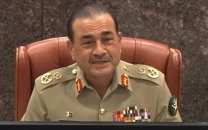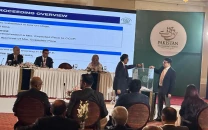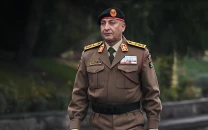Wars and the economy
Interestingly enough, every time we had fought somebody else’s war, our economy had performed like a tiger

This is not the first time that our economy had collapsed because of our own wars. But interestingly enough, every time we had fought somebody else’s war, our economy had performed like a tiger and at times, even when wars were fought too far away from our boundaries. The three-year Korean War in the early 1950s is a good example of how a distant war had helped boost our economy. Jute was in great demand during this war and we being one of the world’s largest exporters of the golden fibre made huge windfall gains by meeting this demand. It is another story that the money earned from export of East Pakistan’s jute was spent on West Pakistan, sowing the seeds of mistrust between the two wings very early in the day that finally led to the country’s dismemberment in 1971. Our economy made further gains when we signed two regional defence pacts with the US (Cento and Seato) in the mid-1950s to jointly contain the presumed expansion of Soviet communism and Chinese socialism.
But the three wars that we fought against India — the one in 1965, next in 1971 and the third fought on the Kargil heights in 1999 — had proved to be too costly for our economy. It was mainly the post-1965 war related socio-economic and political crises that had led to the 1971 war which further aggravated the economic environs forcing the residual Pakistan to suffer economic stagnation for the next five years. And by the time the Soviet Union had invaded Afghanistan in late 1979, our economy had almost nosedived. But suddenly, it went spiralling up as we agreed to fight the US war as a frontline state of the free world against the occupying Soviet troops in Afghanistan. For the next nine years, as the war raged on across the Durand Line, Pakistan’s economy grew at the rate of six per cent per annum on an average thanks largely to the almost $100 billion or so unencumbered that came our way from all over the world. When General Zia died in an air crash in 1988, there was nothing on the ground to show where all that money had gone. Next, perhaps, egged on by a false sense of invincibility ensuing from a self-serving notion of our role in the Soviet collapse, we chose this juncture to launch our own two low-intensity wars, one on the side of the Taliban against the Northern Alliance and the other on the side of Indian Kashmiris against the occupying troops.
As if on cue, the US chose the timing to invoke the Pressler Amendment against Pakistan for crossing the nuclear red-line. And Washington soon followed up by turning the country into one of the world’s most sanctioned countries after Libya because of our nuclear tests and the Kargil war. But as soon as former president Pervez Musharraf agreed to join the US-led war against terror in late 2001, our economy began picking up once again showing a six per cent growth rate per annum on an average during the next eight years thanks to the inflow of generous compensatory US dollars only to take a nosedive once again as someone else’s war increasingly became our own by 2010.
Published in The Express Tribune, December 10th, 2014.
Like Opinion & Editorial on Facebook, follow @ETOpEd on Twitter to receive all updates on all our daily pieces.
















COMMENTS
Comments are moderated and generally will be posted if they are on-topic and not abusive.
For more information, please see our Comments FAQ